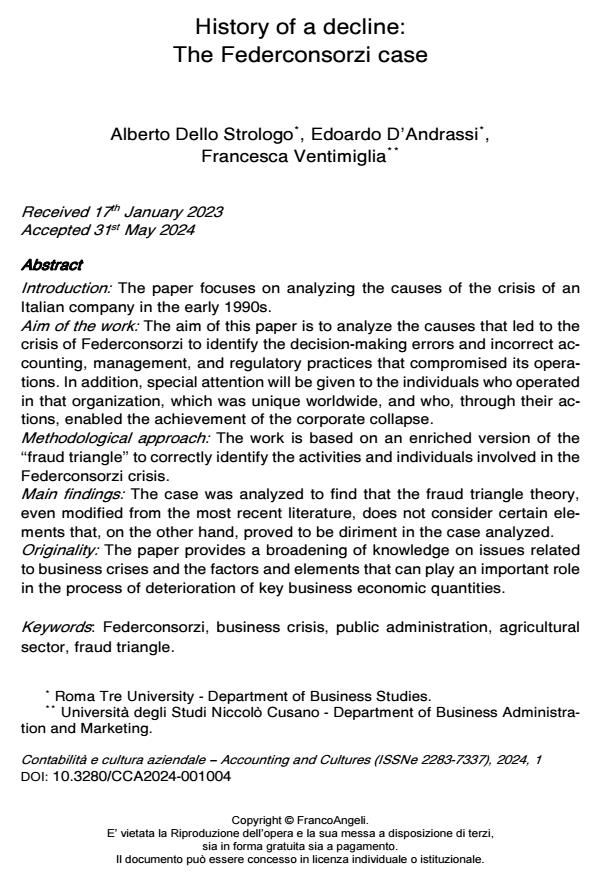History of a decline: The Federconsorzi case
Titolo Rivista CONTABILITÀ E CULTURA AZIENDALE
Autori/Curatori Alberto Dello Strologo, Edoardo D’Andrassi, Francesca Ventimiglia
Anno di pubblicazione 2024 Fascicolo 2024/1
Lingua Inglese Numero pagine 23 P. 79-101 Dimensione file 91 KB
DOI 10.3280/CCA2024-001004
Il DOI è il codice a barre della proprietà intellettuale: per saperne di più
clicca qui
Qui sotto puoi vedere in anteprima la prima pagina di questo articolo.
Se questo articolo ti interessa, lo puoi acquistare (e scaricare in formato pdf) seguendo le facili indicazioni per acquistare il download credit. Acquista Download Credits per scaricare questo Articolo in formato PDF

FrancoAngeli è membro della Publishers International Linking Association, Inc (PILA)associazione indipendente e non profit per facilitare (attraverso i servizi tecnologici implementati da CrossRef.org) l’accesso degli studiosi ai contenuti digitali nelle pubblicazioni professionali e scientifiche
Introduction: The paper focuses on analyzing the causes of the crisis of an Italian company in the early 1990s. Aim of the work: The aim of this paper is to analyze the causes that led to the crisis of Federconsorzi to identify the decision-making errors and incorrect accounting, management, and regulatory practices that compromised its operations. In addi-tion, special attention will be given to the individuals who operated in that organi-zation, which was unique worldwide, and who, through their actions, enabled the achievement of the corporate collapse. Methodological approach: The work is based on an enriched version of the “fraud triangle” to correctly identify the activities and individuals involved in the Feder-consorzi crisis. Main findings: The case was analyzed to find that the fraud triangle theory, even modified from the most recent literature, does not consider certain elements that, on the other hand, proved to be diriment in the case analyzed. Originality: The paper provides a broadening of knowledge on issues related to business crises and the factors and elements that can play an important role in the process of deterioration of key business economic quantities.
Parole chiave:Federconsorzi, business crisis, public administration, agricultural sector, fraud triangle.
Alberto Dello Strologo, Edoardo D’Andrassi, Francesca Ventimiglia, History of a decline: The Federconsorzi case in "CONTABILITÀ E CULTURA AZIENDALE" 1/2024, pp 79-101, DOI: 10.3280/CCA2024-001004